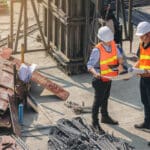
What Is a Digital Twin? And Why Should Facilities Teams Care?
You’ve probably heard the term “digital twin” at conferences, events, or in product demos. It sounds futuristic (and maybe even expensive) but at its core, a digital twin is a very practical tool for facilities teams looking to work smarter, not harder.
So what exactly is a digital twin? And why does it matter for your day-to-day work? Let’s break it down.
What Is a Digital Twin?
A digital twin is a virtual representation of a physical asset, space, or system. Think of it as a living digital model of your building that’s always up to date. It’s not just a static diagram–it pulls in real-time data from sensors, equipment, and building systems to give you a dynamic, accurate view of what’s happening inside your facility.
More specifically, at VIATechnik, we describe a digital twin as a digital representation of a physical environment, enabling data-driven insights and action. It represents a connection between the digital and physical world, and it is used to enable organizations to monitor, analyze, and simulate real-world data in a virtual environment.
If that sounds overly-complex, here’s a simple analogy: A digital twin is like Google Maps for your building. You’re not just seeing the layout, you’re seeing what’s actually happening in your building in real time. Which HVAC units are under strain? Which lights are consuming the most energy? Where’s the next service request coming from?
How Do Digital Twins Work in Facilities Management?
Digital twins collect data from all the systems in your building—HVAC, lighting, fire safety, access control, and more—and feed that data into one central platform. From there, facilities teams can:
- Monitor performance remotely
- Run diagnostics
- Spot inefficiencies
- Plan preventative maintenance
- And even simulate “what if” scenarios for upgrades or emergencies
That’s the value a digital twin can bring to your team. You’re not guessing anymore. You’re acting on facts.
What Challenges Should You Prepare For?
Adopting a digital twin requires some upfront lift. Integrating legacy systems, digitizing asset data, and training your team takes time and buy-in. But the return on your investment is clear:
- Fewer surprise failures
- Smarter resource allocation
- More time spent fixing, less time searching
The key is to think of the digital twin as a tool to amplify your team’s efforts—not replace them. It doesn’t do your job for you; it makes your job more impactful.
Why Should Facilities Teams Care?
When you’re in the trenches managing building systems, vendor coordination, maintenance requests, and more, you don’t need more complexity. You need tools that actually help. A digital twin isn’t just technology for the sake of having more technology. It’s a practical, day-to-day tool in your tool belt that puts the right info in the right hands, right when it’s needed.
1. Work More Efficiently
Digital twins centralize information that’s often scattered across clipboards, emails, and outdated systems. Imagine pulling up a virtual model of your building and clicking on any system—HVAC, electrical, plumbing—to get the specs, maintenance history, and real-time status in seconds. That’s less time spent hunting down information, and more time actually solving problems.
2. Reduce Downtime and Maintenance Costs
Most maintenance is either reactive or based on static schedules. Digital twins enable condition-based maintenance meaning you can address issues when they start showing signs, not after they break down. By catching early indicators (like unusual temperature swings or energy spikes), you can prevent expensive downtime and extend equipment life.
3. Make Smarter Decisions
Planning capital improvements or justifying budget requests often feels like guesswork. With a digital twin, you’ve got real-time and historical data that helps you prioritize upgrades, forecast future needs, and negotiate vendor contracts with hard numbers. It’s like going from gut instinct to data-backed confidence.
4. Improve Team Communication
When technicians, facility managers, and leadership all use the same system and speak the same data language it cuts through confusion and miscommunication. Whether you’re handing off a work order, planning a shutdown, or reporting on KPIs, everyone’s looking at the same source of truth. That alignment leads to faster decisions and fewer dropped balls.
Key Benefits for Facilities Teams
From streamlining operations to supporting sustainability goals, the benefits of a digital twin go beyond flashy dashboards. Here’s what it actually means for your team whether they’re on the ground, in the boiler room, or anywhere in between.
- Centralized access to asset data and maintenance history
- Improved energy efficiency and sustainability tracking
- Faster troubleshooting and service response
- Better compliance reporting and audit readiness
- Increased building uptime and occupant comfort
Conclusion
Digital twins are no longer just “emerging tech.” They’re here and they’re helping facilities teams just like yours take control of their buildings in smarter, faster, and more proactive ways. If you’ve ever wished you had a bird’s-eye view of your building or a crystal ball for your maintenance plan, a digital twin is the next best thing.
Ready to dive deeper?
Meet Voyager
See how we’re helping Facilities Teams like yours unlock insights with digital twin technology



